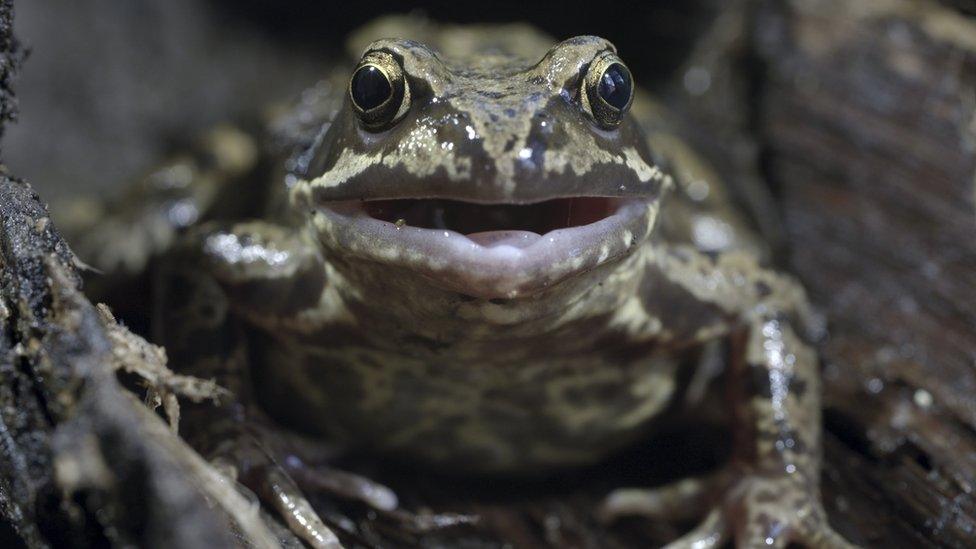Fewer frogs and toads in Scottish gardens
- Published

A decline in the number of water features is a factor in declining numbers of frogs
Fewer frogs and toads are being spotted in Scottish gardens, a nationwide survey has found.
Regular sightings of frogs have dropped 5% since 2014, with toad sightings going down by 7% over the same period.
The figures come from the RSPB's Big Garden Birdwatch, with results from 10,300 gardens across Scotland.
The charity said the disappearance of garden ponds and pools was a big factor in the declining numbers.
The RSPB's survey found that grey squirrels remained the most frequent visitor to Scottish gardens, with 73% of people spotting them every month.
Foxes are the next most common garden visitors, seen by 70%.
And although the numbers of frogs appear to be declining, they were still seen at least once a month by 62% of those who took part in the survey.
Toads are only seen in 17% of Scottish gardens each month, down from 25% four years ago.
Can you tell a frog from a toad?
Left: A frog's skin is smooth and moist and they have a pointed nose
Right: A toad's skin is warty and dry and their noses are rounded, almost semi-circular in shape
Source: RSPB
to creating simple ponds or pools in their outdoor space.
James Silvey, RSPB Scotland's species and habitats officer, said: "As frog and toads are amphibians they need a nearby source of water close to their homes to survive.
"It's very easy to give them a helping hand by creating a small pond, or using a washing up bowl to make a pool away from sunlight and well covered with plants.
"These simple tasks to help them can have a positive impact on a whole range of garden wildlife too."
The three least common species spotted in Scottish gardens were the slow worm, great crested newt and muntjac deer.